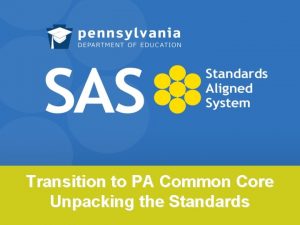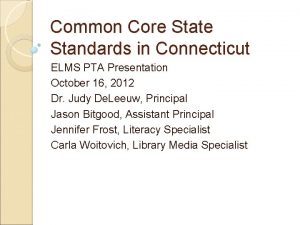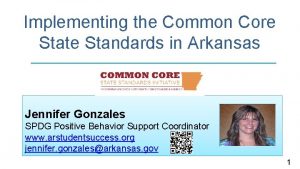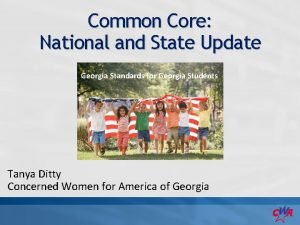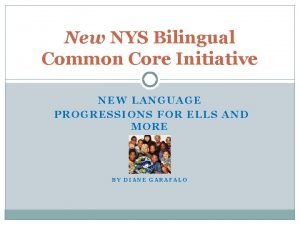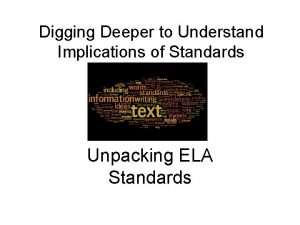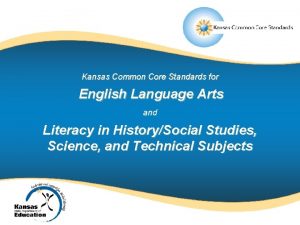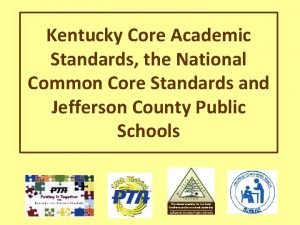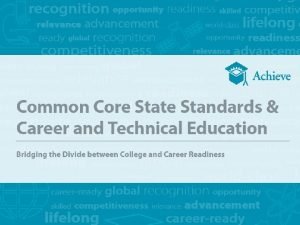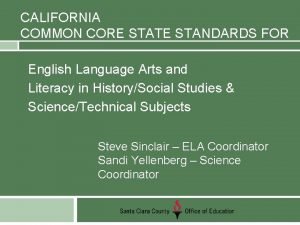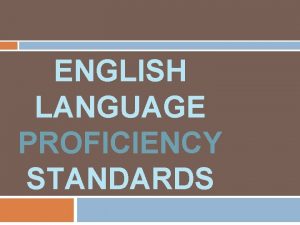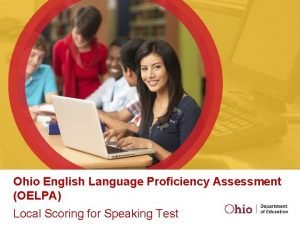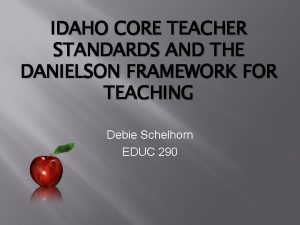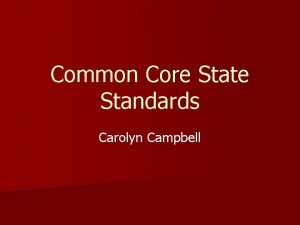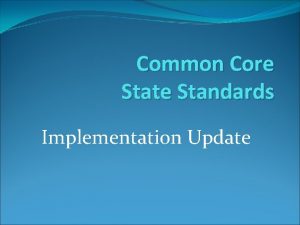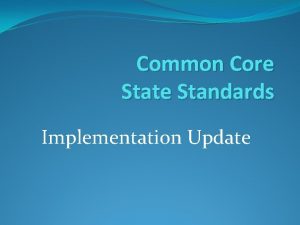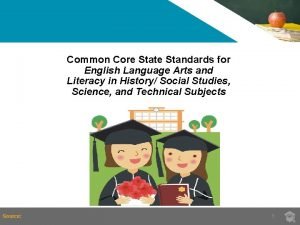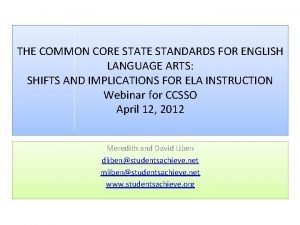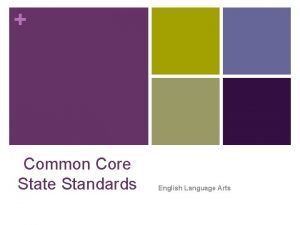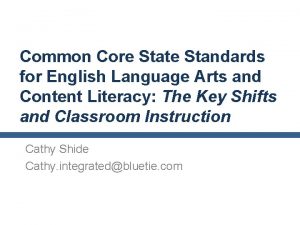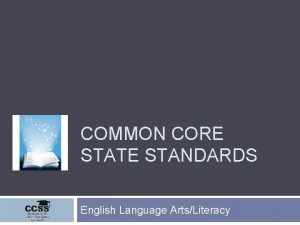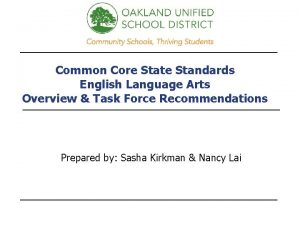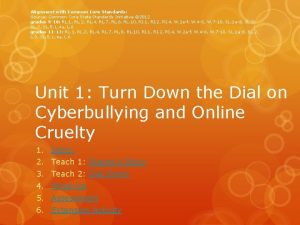Common Core State Standards Considerations for English Language




















- Slides: 20

Common Core State Standards: Considerations for English Language Learners

General Considerations for Implementation ØSpecific—based on individual students ØFollow program requirements ØEvidenced-based, best practices ØOngoing monitoring

ELLs and CCSS ELLs must be provided access to core content and instruction in English language development. Districts determine how they will provide instruction for ELLs. 3

Oral Language Development Language learning: • is social learning. • is most effective when the environment is supportive and adapting. • must be meaningful, purposeful, authentic, and cognitively appropriate to the learner. • requires comprehensible input and opportunities for language output.

Principles of Instruction for ELLs Ø Focus on academic language, literacy, and vocabulary. Ø Link background knowledge and culture to learning. Ø Increase comprehensible input and language output. Ø Promote classroom interaction. Ø Stimulate higher order thinking skills and the use of learning strategies.

Listening Comprehension ØHearing: • Physical process (perceiving sounds with our ears) • Being able to hear individual sounds in language is dependent upon prior experience with the sounds of that language • Unintentional • Can be prevented by physical disability

Listening Comprehension continued… ØListening: • Mental process (perceiving content with our minds) • Enhanced by knowledge of the topic and the structure of the language • Dependent on the active construction of meaning • Intentional • Cannot be prevented by physical disability 7

Listening Comprehension continued… ØOne-Way Listening: • Listener is not required to respond orally to the input • Typical of school learning experiences • More difficult than two-way listening opportunities • More demanding because of the nature of the input 8

Listening Comprehension continued… ØTwo-Way Listening: • Listener responds as a speaker to the input • Children learn quickly how to negotiate face-to-face conversations • Gestures and context provide help in comprehension • Topics are typically not complex 9

Common Core Anchor Standard for English Language Arts 1. Comprehension and Collaboration Students are able to: • prepare for and participate effectively in a range of conversations and collaborations with diverse partners, building on others’ ideas and expressing their own clearly and persuasively; • integrate and evaluate information presented in diverse media and formats, including visually, qualitatively, and orally; and • evaluate a speaker’s point of view, reasoning, and use of evidence and rhetoric.

Common Core Anchor Standard for English Language Arts 2. Presentation of Knowledge and Ideas Students are able to: • present information, findings, and supporting evidence that listeners can follow the line of reasoning and make sure the organization, development, and style are appropriate to task, purpose, and audience; • make strategic use of digital media and visual displays of data to express information and enhance understanding of presentations; and • adapt speech to a variety of contexts and communicative tasks, demonstrating command of formal English when indicated or appropriate.

Scaffolding Techniques to Assist ELLs Achieve the CCSS for Oral Language ØSocial Scaffolds: • Small group learning • Interactive structures that encourage discussion and active participation • Cooperative learning structures • Study buddies/Learning Partners • Study groups

Scaffolding Techniques to Assist ELLs Achieve the CCSS for Oral Language ØVisual and Graphic Scaffolds: • Gestures, chalkboard, pictures, props • Graphic organizers • Tables, charts, graphs, diagrams • Demonstrations and role-plays • Advance organizers, outlines, structured notes, T-lists, sentence frames • Picture dictionaries, learner dictionaries, translation dictionaries, word source software • Alternative and modified texts

Common Core State Standards for Mathematics ØProcesses, proficiencies, and varieties of expertise that should be developed in students ØConceptual understanding in addition to procedural skills

Common Core State Standards for Mathematics continued… Ø Language skills: • Produce language to explain and analyze problems. • Manipulate abstract symbols and decontextualized mathematics language to create a coherent representation of a problem. • Demonstrate an understanding of stated assumptions and established results in an argument. • Build a logical progression of statements to justify conclusions. • Communicate precisely to others about problems and findings

Higher Order Thinking Skills Ø Must be explicitly taught. Ø ELL students may need instruction on the meaning of the word: • some words are polysemous • some words are used as a noun and verb Ø Teachers need to model the skill as well as expect students to use the skill.

Developing Higher-Order Thinking Skills in Math and Science (Blooms)

Developing Higher-Order Thinking Skills in Math and Science (Blooms)

Developing Higher-Order Thinking Skills in Math and Science (Blooms)

Webpage and Title III Contacts CCSS and ELL webpage www. ode. state. or. us/search/page/? id=3 823 Kim Miller, Education Specialist Kim. a. miller@state. or. us
 Common core state standards pa
Common core state standards pa Connecticut common core state standards
Connecticut common core state standards Common core state standards missouri
Common core state standards missouri Common core state standards arkansas
Common core state standards arkansas Common core standards ga
Common core standards ga Bilingual common core progressions
Bilingual common core progressions Unpacking the standards template
Unpacking the standards template Ksde social studies standards
Ksde social studies standards Kcas standards
Kcas standards Common career technical core standards
Common career technical core standards Compare and contrast first and second language acquisition
Compare and contrast first and second language acquisition California content standards english
California content standards english Language english
Language english What are the elps
What are the elps Oelpa practice test
Oelpa practice test The brittle, rocky outer layer of earth
The brittle, rocky outer layer of earth Inner core and outer core
Inner core and outer core Layers of earth from most dense to least dense
Layers of earth from most dense to least dense Core capabilities and core rigidities
Core capabilities and core rigidities National core standards 6 priority areas
National core standards 6 priority areas Idaho core teacher standards
Idaho core teacher standards
